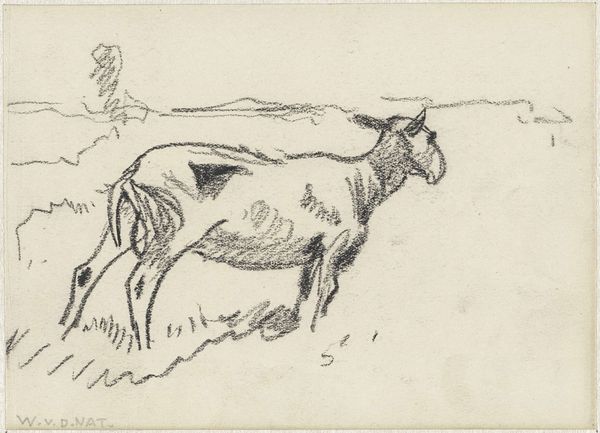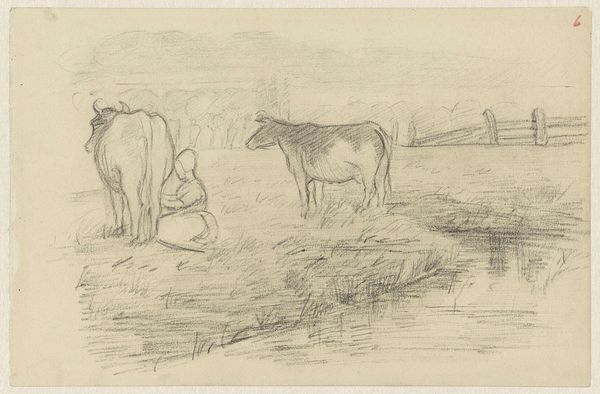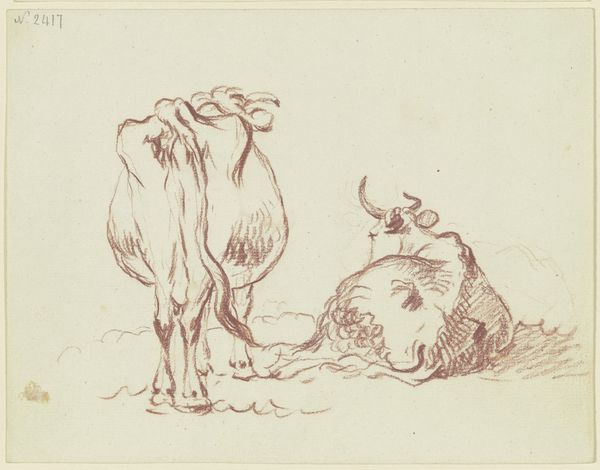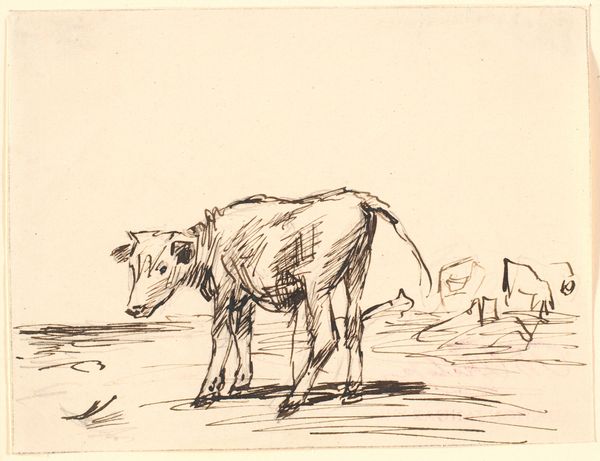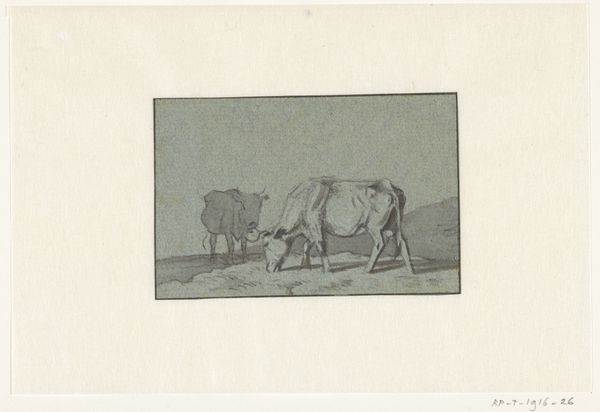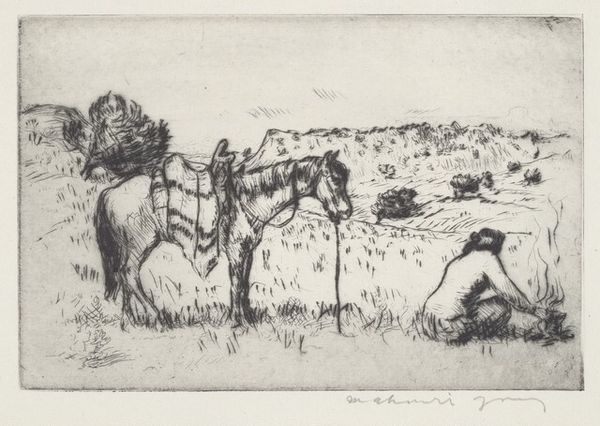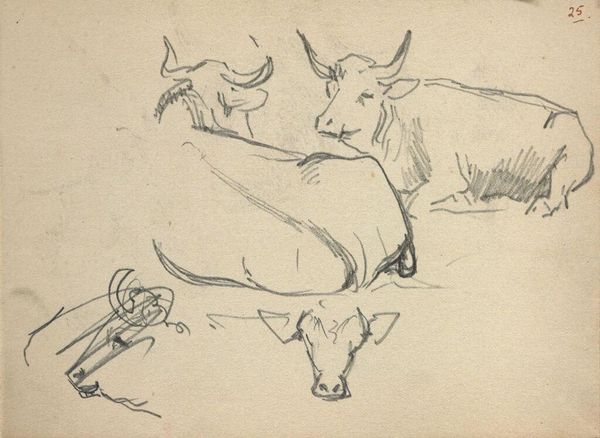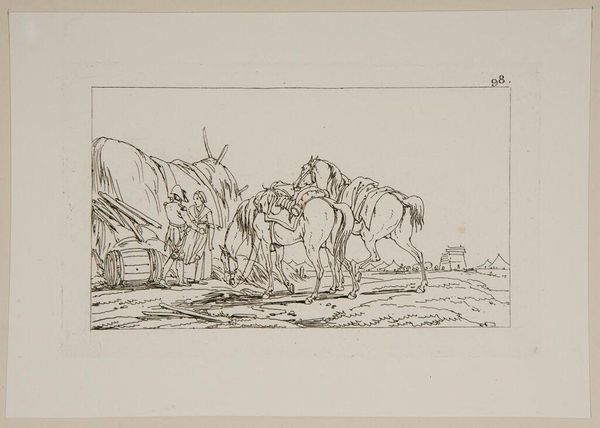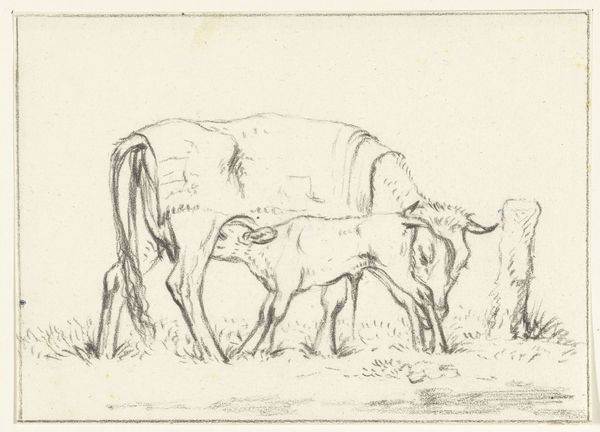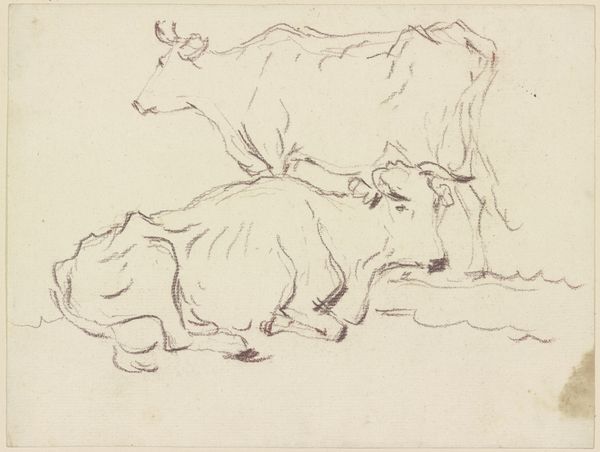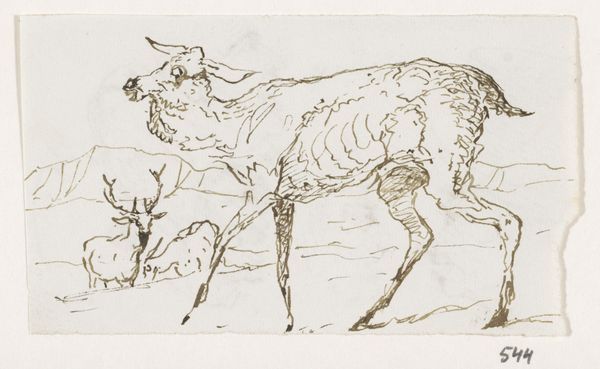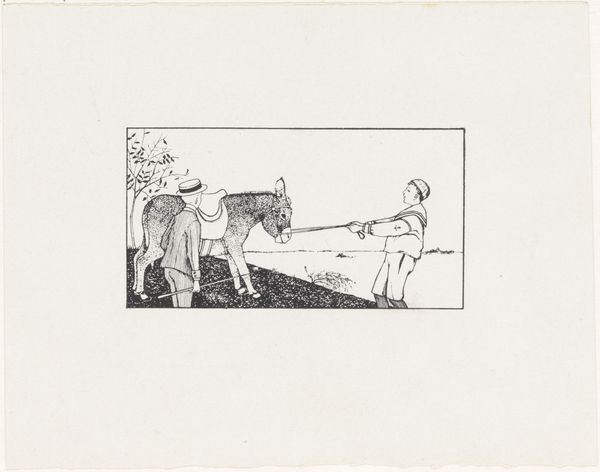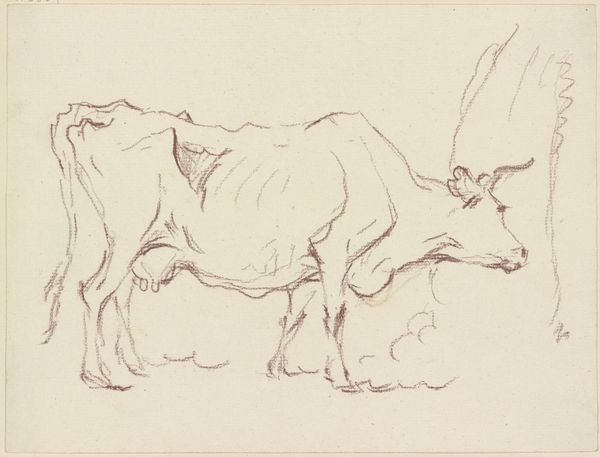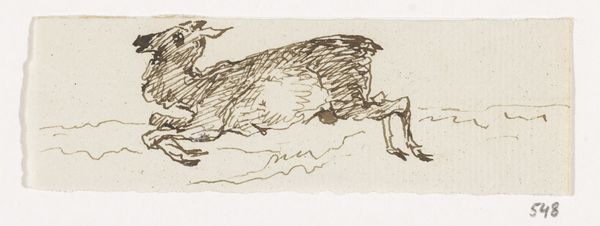
Copyright: Public Domain: Artvee
Curator: A pastoral scene by Camille Pissarro, entitled "Cowherder," sketched around 1899. It’s a pencil drawing, rendered with delicate lines. Editor: It feels...unburdened. Free. The quick strokes capture the vastness of the pasture and the calm strength of the figures so economically. Curator: Precisely. It reflects a growing trend at the end of the 19th Century for urban artists turning their gaze towards the countryside, perhaps mythologizing an escape from the city. We see it mirrored in literature, politics, even nascent sociological studies. Editor: I am fascinated by the cowherder's headdress; almost like a blindfold or perhaps an olympic victor's head wreath, but combined with bare shoulders, its symbolism is intriguing. A representation of guidance combined with a deliberate restriction? Curator: Well, perhaps. I think we risk ascribing intentionality where it may not fully exist. These rapid drawings sometimes served more as studies or personal explorations and shouldn't necessarily be read as finished statements, and that freedom can be liberating. Editor: The figures themselves – human and bovine – feel archetypal. A visual echo of ancient pastoral traditions, simplified and brought into the modern moment by Pissarro’s hand. They remind us that across centuries, certain human experiences remain anchored to the land. Curator: It is important to acknowledge the sociopolitical aspects influencing such portrayals; such themes often gained traction alongside rising populist movements which romanticized rural labor and life. The idyllic depiction may overlook or whitewash more complex agrarian realities. Editor: But that simplicity itself becomes the symbol, doesn't it? An icon representing longing for a less complicated existence, a desire to return to nature. Even if the reality is far more nuanced. Curator: Yes. It is difficult, after all, to avoid filtering artistic readings through our current lens. Editor: So while on the surface this pencil work evokes an older trope of humans living among the landscape, these layered insights of context give the composition enduring potency for contemplation. Curator: Indeed. It prompts us to reflect not only on the scene itself but on the conditions which allowed the artist to make that scene, too.
Comments
No comments
Be the first to comment and join the conversation on the ultimate creative platform.
